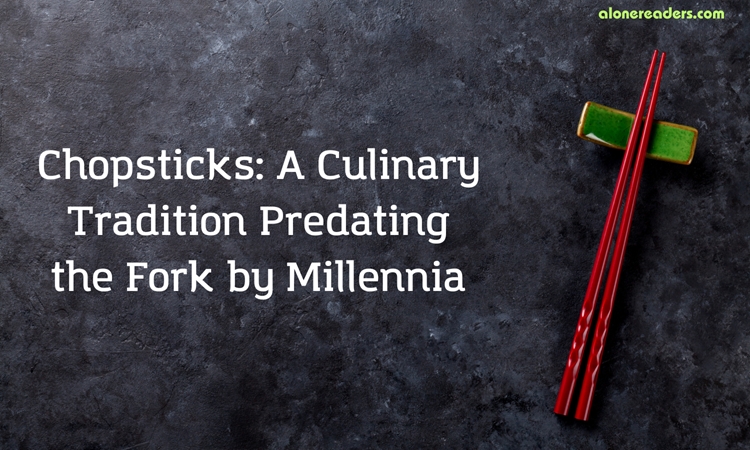
The story of chopsticks is not just a narrative about an eating utensil; it's a journey through time, culture, and culinary evolution. Long before the fork became a staple at European dining tables, chopsticks had already secured their place in Asian culinary history. This simple yet profound tool, originating from China over 5,000 years ago, has become an emblem of a rich and diverse food culture spanning several Asian countries.
It's believed that chopsticks first emerged in China approximately 5,000 years ago. Initially, they were not tools for eating but rather implements used in cooking. These rudimentary chopsticks were likely twigs used to reach into pots of boiling water or oil. The transformation of chopsticks from cooking to eating utensils is a significant leap, representing not just a change in function but also an evolution in dining etiquette and culinary practices.
Around 400 BCE, Confucius, the revered Chinese philosopher, played a pivotal role in popularizing chopsticks as an eating tool. Confucius, a vegetarian, advocated for a non-violent approach to living, including at the dining table. He believed that knives evoked violence and should not be present during meals, which likely influenced the widespread adoption of chopsticks for eating.
By 500 CE, chopsticks had become the preferred eating utensil in various Asian countries, including Japan and Vietnam. The spread of chopsticks from China to neighboring regions is a testament to the cultural exchanges that occurred through trade, migration, and political interactions. Each country adapted the use of chopsticks to its unique culinary traditions, leading to variations in style, material, and etiquette.
In Japan, for example, chopsticks (known as 'hashi') are typically shorter and pointier compared to their Chinese counterparts. This design reflects the Japanese cuisine's focus on delicate, bite-sized pieces, making precise picking easier. Meanwhile, in Vietnam, chopsticks are often used in conjunction with a spoon, especially when consuming noodle soups like phở.
In contrast to the ancient roots of chopsticks, the fork's journey as a dining utensil in Europe is relatively recent. While the ancient Greeks and Egyptians used two-tined forks for cooking, it wasn't until the Byzantine Empire that forks began to be seen as eating utensils. Even then, their adoption was slow and met with resistance.
Forks were first introduced in Italy and France around the 11th century. Initially, they were considered overly luxurious or effeminate and were not widely accepted. Medieval Europe largely relied on knives, spoons, and their hands for eating, with rounds of stale bread serving as plates for meats and vegetables.
It wasn't until the 18th century that forks with three and four tines became common in Europe. This gradual acceptance highlights the stark contrast with chopsticks, which had been a mainstay in Asian dining culture for millennia.
The history of chopsticks is not just a story of an eating utensil but a reflection of the cultural, social, and economic changes across Asia. Chopsticks are deeply embedded in the traditions and daily lives of billions of people. They symbolize a connection to the past and a continued reverence for tradition and etiquette.
In modern times, chopsticks have transcended their traditional boundaries, becoming popular worldwide. They are not only used in Asian cuisine but have also found a place in fusion and international dining experiences. The simplicity of their design, coupled with the skill required to use them, continues to fascinate and challenge diners globally.
The histories of chopsticks and forks offer a fascinating glimpse into the evolution of dining customs and culinary tools. While chopsticks boast a history that predates the fork by millennia, both utensils have their unique stories and cultural significance. As symbols of their respective culinary heritages, chopsticks and forks are more than just tools for eating; they are keepers of history and culture, each with its distinct journey through time.